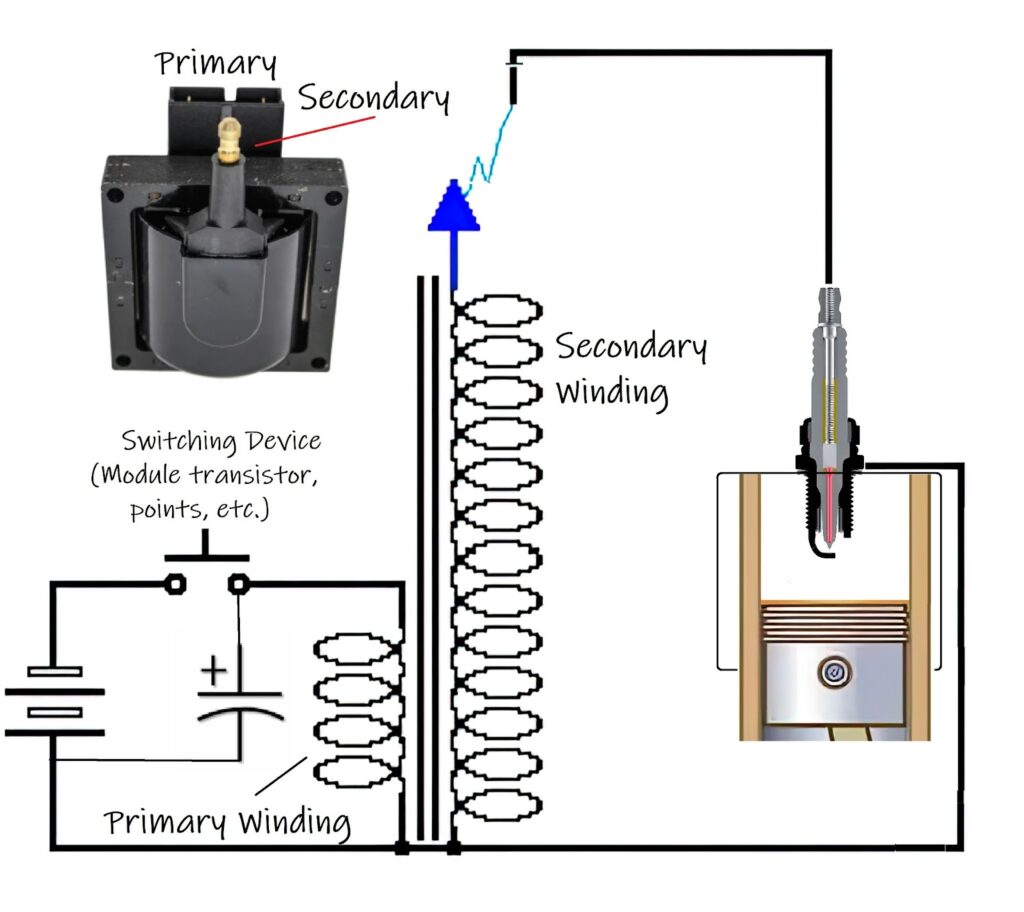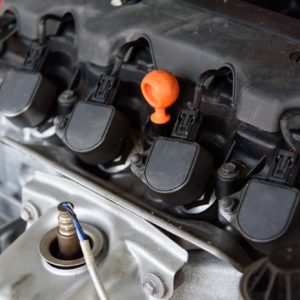On-board diagnostic (OBD) codes are designed to help mechanics and vehicle owners like you identify possible issues with your vehicle. But before attempting any fixes to resolve the codes retrieved by your scan tool, it’s important to know exactly what they mean.
Code P2302 is one of many trouble codes that can be logged and retrieved from the OBD system. Discover what this code might mean for your vehicle.
What Does the P2302 Code Mean?

Diagnostic trouble code (DTC) P2302 stands for “Ignition Coil “A” Secondary Circuit.” It refers to the ignition coil for number 1 cylinder on engines with coil-on-plug or coil-near-plug ignition systems.
Code P2302 can be logged when the powertrain control module (PCM) detects a problem with ignition coil “A” or its secondary (high voltage) circuit.
Coils have their primary winding fed with 12 system voltage on their positive primary terminal and when the ground side of the primary is closed (grounded), the coil primary winding is saturated with magnetism. When that ground is interrupted, a high voltage spark is created when the magnetic field collapses.

Spark plug operation is a necessary component in gas-powered engines. If the primary voltage to the ignition coil is insufficient, high-energy voltage emission will not occur and the engine will misfire.
If the PCM has detected an unusual voltage condition in the secondary control circuit of the ignition coil designated with the letter A, it might log the P2302 code.
Depending on the severity of the problem, related error codes can also be stored with this DTC.
You may also watch this video to understand how ignition coil works:
Note: The definition of code P2302 can differ depending on the vehicle manufacturer. Consult the appropriate repair manual or repair database for the exact code definition.

What are the Common Causes of the P2302 Code?
- Ignition coil failure
- Worn-out spark plug
- Circuit issues, such as a damaged wire or poor connection
- PCM failure
What are the Common Symptoms of the P2302 Code?
- Illuminated check engine light
- Excessive fuel consumption
- Poor engine performance
- Engine misfire
How to Diagnose the P2302 Code
Error code P2302 is a generic code that can be set across several makes and models. However, this does not mean that there is a one-size-fits-all approach to diagnosing its underlying cause. The steps for troubleshooting this code will vary depending on your vehicle’s make and model.
Check out this video to get an idea of what the diagnostic process for this code might involve:
How to Fix the P2302 Code
P2302 can share similar triggers and symptoms with other fault codes. However, that does not mean that they share repair steps as well. All vehicles are different, so make sure to refer to a factory repair guide that is specific to your car.
If you’re considering addressing this code by yourself, it’s a good idea to refresh your auto repair knowledge before attempting any fixes. Consult a vehicle-specific repair manual or an online repair database. These resources provide the appropriate diagnostic and repair procedures for this code. Alternatively, you can leave this job to a professional.
Any information provided on this Website is for informational purposes only and is not intended to replace consultation with a professional mechanic. The accuracy and timeliness of the information may change from the time of publication.


















